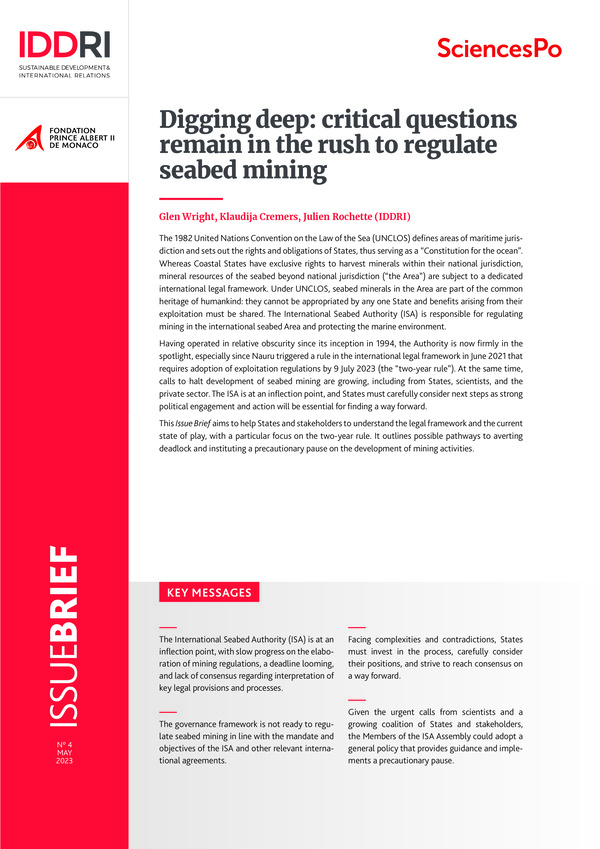Digging deep: critical questions remain in the rush to regulate seabed mining
The 1982 United Nations Convention on the Law of the Sea (UNCLOS) defines areas of maritime jurisdiction and sets out the rights and obligations of States, thus serving as a “Constitution for the ocea...

Abstract
The 1982 United Nations Convention on the Law of the Sea (UNCLOS) defines areas of maritime jurisdiction and sets out the rights and obligations of States, thus serving as a “Constitution for the ocean”. Whereas Coastal States have exclusive rights to harvest minerals within their national jurisdiction, mineral resources of the seabed beyond national jurisdiction (“the Area”) are subject to a dedicated international legal framework. Under UNCLOS, seabed minerals in the Area are part of the common heritage of humankind: they cannot be appropriated by any one State and benefits arising from their exploitation must be shared. The International Seabed Authority (ISA) is responsible for regulating mining in the international seabed Area and protecting the marine environment. Having operated in relative obscurity since its inception in 1994, the Authority is now firmly in the spotlight, especially since Nauru triggered a rule in the international legal framework in June 2021 that requires adoption of exploitation regulations by 9 July 2023 (the “two-year rule”). At the same time, calls to halt development of seabed mining are growing, including from States, scientists, and the private sector. The ISA is at an inflection point, and States must carefully consider next steps as strong political engagement and action will be essential for finding a way forward. This Issue Brief aims to help States and stakeholders to understand the legal framework and the current state of play, with a particular focus on the two-year rule. It outlines possible pathways to averting deadlock and instituting a precautionary pause on the development of mining activities.
Publication Details
Authors: Glen Wright, Klaudija Cremers, Julien Rochette
Venue: IDDRI Year: 2022 Pages: 8 Institution: IDDRI